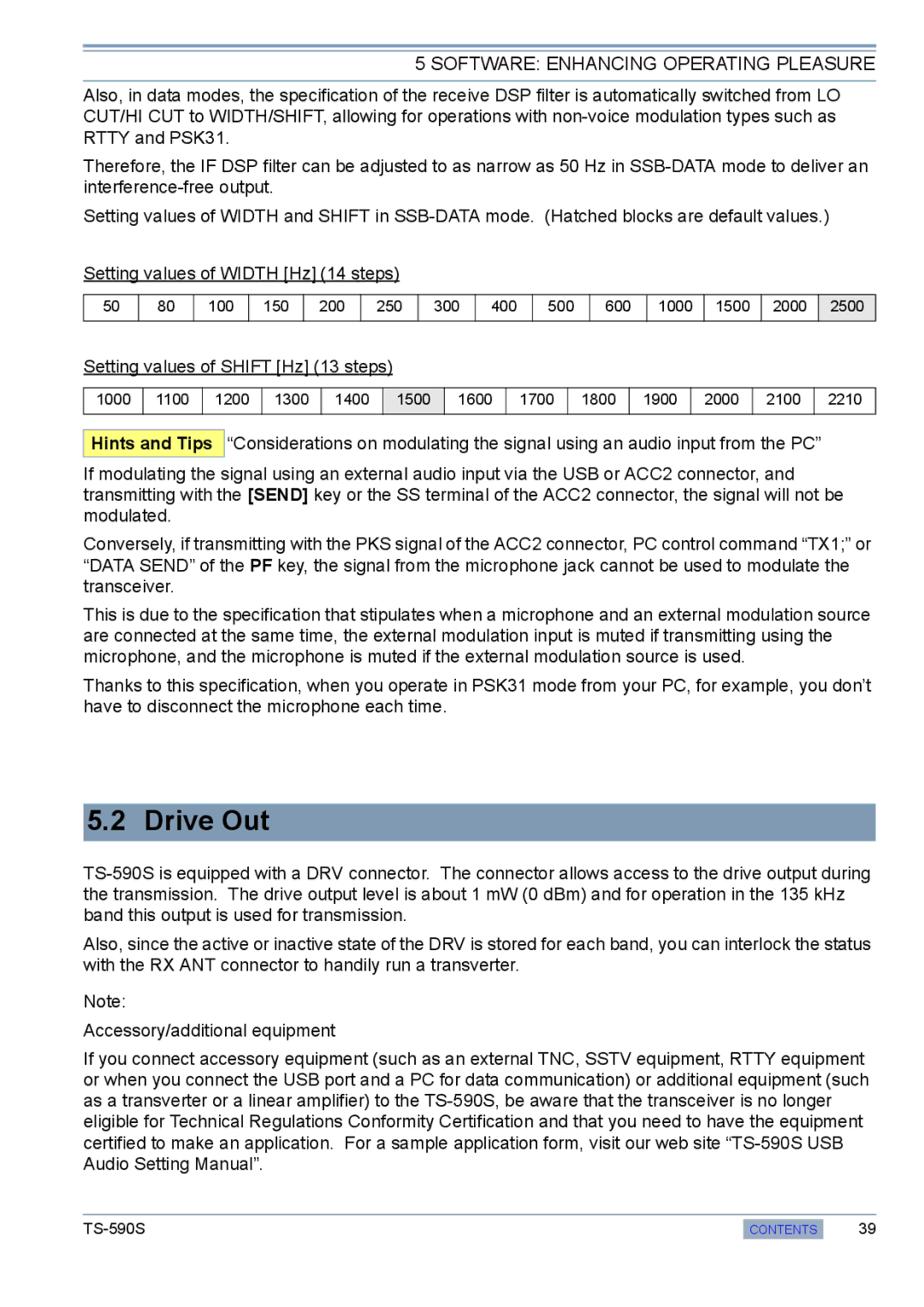
5 SOFTWARE: ENHANCING OPERATING PLEASURE
Also, in data modes, the specification of the receive DSP filter is automatically switched from LO CUT/HI CUT to WIDTH/SHIFT, allowing for operations with
Therefore, the IF DSP filter can be adjusted to as narrow as 50 Hz in
Setting values of WIDTH and SHIFT in
Setting values of WIDTH [Hz] (14 steps)
50
80
100
150
200
250
300
400
500
600
1000 1500 2000 2500
Setting values of SHIFT [Hz] (13 steps)
1000
1100
1200
1300
1400
1500
1600
1700
1800
1900
2000
2100
2210
Hints and Tips
“Considerations on modulating the signal using an audio input from the PC”
If modulating the signal using an external audio input via the USB or ACC2 connector, and transmitting with the [SEND] key or the SS terminal of the ACC2 connector, the signal will not be modulated.
Conversely, if transmitting with the PKS signal of the ACC2 connector, PC control command “TX1;” or “DATA SEND” of the PF key, the signal from the microphone jack cannot be used to modulate the transceiver.
This is due to the specification that stipulates when a microphone and an external modulation source are connected at the same time, the external modulation input is muted if transmitting using the microphone, and the microphone is muted if the external modulation source is used.
Thanks to this specification, when you operate in PSK31 mode from your PC, for example, you don’t have to disconnect the microphone each time.
5.2 Drive Out
Also, since the active or inactive state of the DRV is stored for each band, you can interlock the status with the RX ANT connector to handily run a transverter.
Note:
Accessory/additional equipment
If you connect accessory equipment (such as an external TNC, SSTV equipment, RTTY equipment or when you connect the USB port and a PC for data communication) or additional equipment (such as a transverter or a linear amplifier) to the
CONTENTS
39
